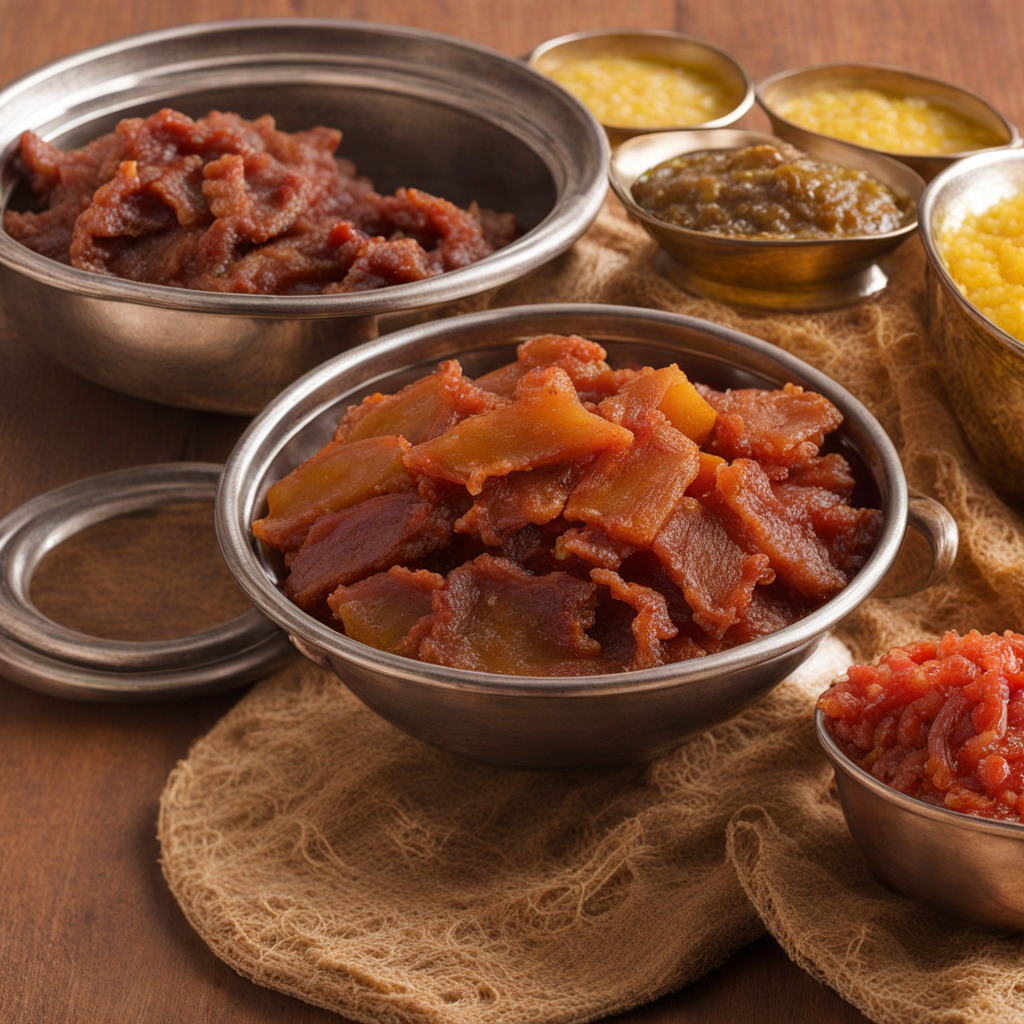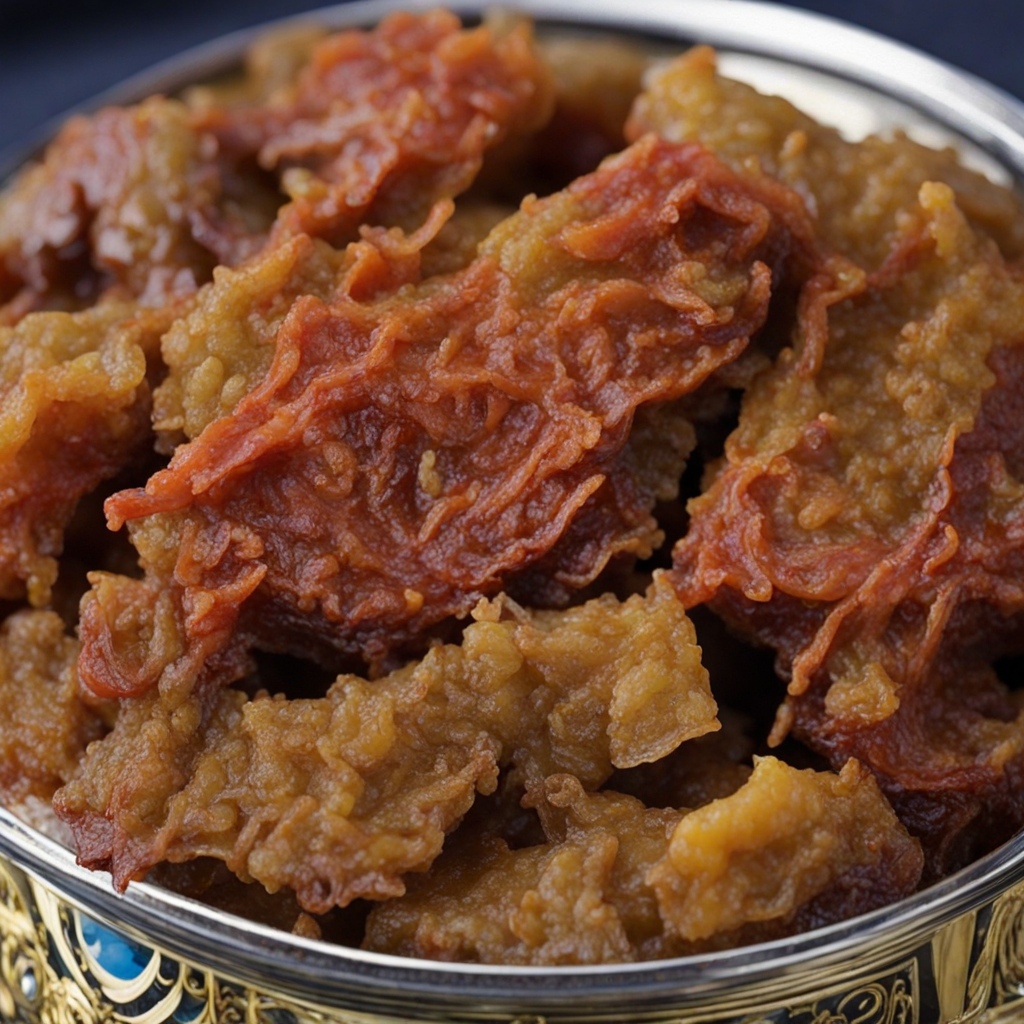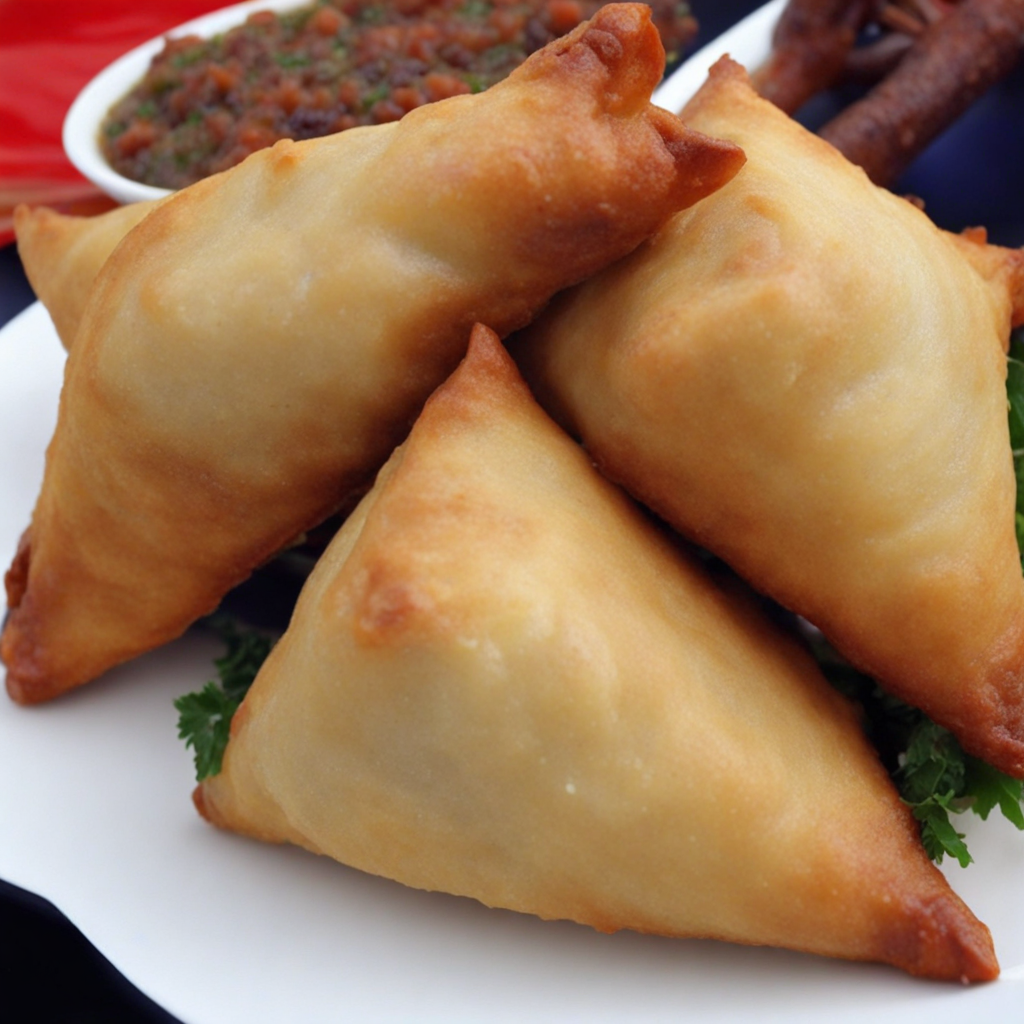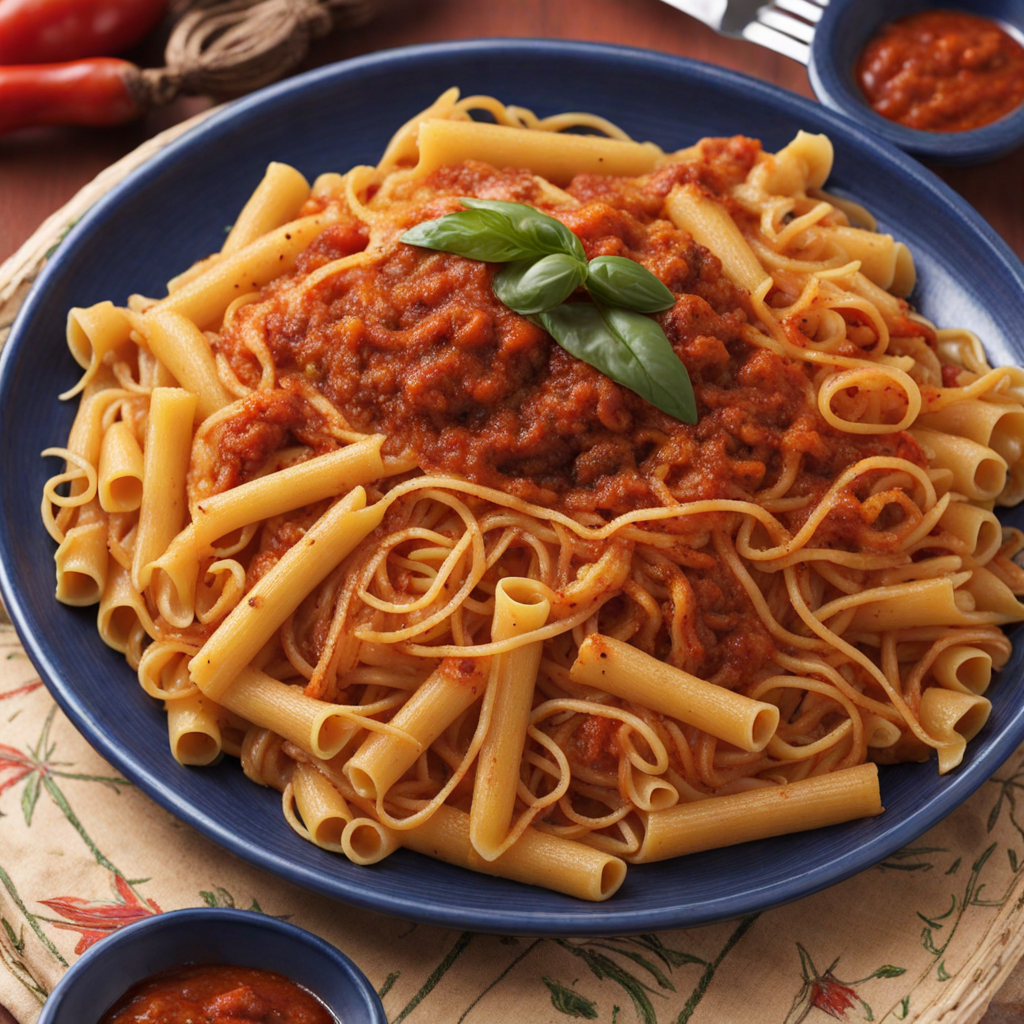Muqmad
Muqmad is a delightful Somali delicacy that showcases the rich culinary traditions of the region. This dish consists of sun-dried, salted meat, typically beef or goat, which is carefully prepared to enhance its natural flavors. The drying process not only preserves the meat but also intensifies its taste, offering a unique umami profile that is both savory and satisfying. The saltiness of the preserved meat is balanced by a variety of spices, often including cumin, coriander, and black pepper, which add depth and complexity to each bite. Traditionally, Muqmad is enjoyed as a snack or served alongside rice, flatbreads, or stews, making it a versatile addition to the Somali table. It is often accompanied by fresh vegetables, such as tomatoes and onions, which provide a refreshing contrast to the richness of the meat. The dish is typically shared among family and friends, embodying the communal spirit of Somali dining. As you take your first bite of Muqmad, you will experience the robust flavors that have been cherished for generations. The combination of the chewy texture of the dried meat and the aromatic spices creates a wonderful harmony that is both comforting and exciting to the palate. Whether enjoyed as part of a larger feast or as a standalone treat, Muqmad invites you to explore the vibrant culinary landscape of Somalia and discover a new favorite in your gastronomic journey.
How It Became This Dish
The Rich Tapestry of مقمد (Maqmad) in Somali Cuisine #### Origin and Historical Context Maqmad, a traditional Somali dish, is a fascinating embodiment of the country's culinary heritage, deeply rooted in its history, geography, and cultural practices. The dish's name derives from the word "maqmed," which translates to "to stew" or "to boil," encapsulating its method of preparation. Maqmad is primarily made from a base of meat—often goat or chicken—combined with a variety of spices, vegetables, and sometimes grains, showcasing the diverse flavors that characterize Somali cuisine. Somalia's strategic location on the Horn of Africa has historically made it a crossroads for trade and cultural exchange. The spice trade, in particular, influenced the Somali palate, introducing ingredients such as cumin, coriander, and cardamom, which are integral to maqmad's flavor profile. The dish is thought to have originated in the coastal areas, where maritime trade routes brought not only spices but also culinary techniques from the Arabian Peninsula, Persian Gulf, and even Indian subcontinent. #### Cultural Significance Maqmad is more than just a dish; it is a cultural symbol that reflects the communal values of Somali society. Food in Somalia is often associated with hospitality and family bonds, and maqmad plays a central role in gatherings and celebrations. Preparing maqmad is typically a communal affair, with family members coming together to cook and share stories, reinforcing social ties and cultural identity. In Somali culture, meals are often served on a communal platter, and maqmad is no exception. The act of sharing food is seen as an expression of love and generosity. During significant events such as weddings, Eid celebrations, and other communal festivities, maqmad takes center stage, showcasing the family's culinary prowess and the importance of traditional recipes passed down through generations. #### Preparation and Variations The preparation of maqmad is an art that has been honed over centuries. The dish begins with marinating the meat, which is typically seasoned with a blend of spices—garlic, onion, turmeric, and sometimes chili—giving it a rich and aromatic flavor. The meat is then slow-cooked to tenderness, allowing the spices to infuse deeply. Vegetables like carrots, potatoes, and bell peppers may be added, enriching the stew's nutritional value and flavor. While the traditional maqmad often features goat or chicken, variations exist depending on the region, available ingredients, and personal preferences. In urban areas, where access to diverse ingredients is more prevalent, one might find maqmad made with beef or even fish, reflecting the coastal influence. Additionally, some families incorporate legumes or grains, such as rice or pasta, as a side, emphasizing the dish's adaptability. #### Development Over Time As Somalia has undergone various socio-political changes, so too has its culinary landscape. The civil unrest that began in the late 20th century disrupted traditional food practices and altered access to ingredients. Despite these challenges, the Somali diaspora has played a crucial role in preserving and evolving maqmad. As Somalis migrated to different parts of the world, they brought their culinary traditions with them, adapting recipes to incorporate locally available ingredients while maintaining the essence of the dish. In places like the United States, Canada, and Europe, maqmad has found its way into Somali restaurants, where chefs innovate while paying homage to traditional methods. The rise of social media has further popularized the dish, with food enthusiasts sharing recipes and cooking techniques, bridging generations and geographical distances. This global engagement has not only helped preserve maqmad but has also led to a revival of interest in Somali cuisine as a whole. #### Modern Interpretations and Global Influence Today, maqmad continues to be a beloved dish within Somali communities and is gaining recognition beyond its traditional borders. Chefs and home cooks alike experiment with flavors, incorporating influences from other cuisines while remaining true to the dish's roots. For instance, the use of Mediterranean herbs or fusion elements—like serving maqmad with tzatziki or alongside flatbreads—illustrates the dish's evolving nature. Furthermore, maqmad has become a symbol of cultural pride for the Somali diaspora. Food festivals, cooking classes, and cultural events often feature maqmad, serving not only as a delicious meal but also as a vehicle for cultural education and community bonding. Through sharing this dish, Somalis can express their identity and heritage, creating a sense of belonging in their new environments. #### Conclusion Maqmad is a culinary gem that reflects the resilience and adaptability of Somali culture. From its origins in the coastal regions of Somalia to its modern iterations around the world, maqmad tells a story of community, tradition, and the shared love of food. As it continues to evolve, this dish remains a testament to the enduring nature of culinary heritage, bridging the past with the present and connecting generations through the simple act of sharing a meal. Whether enjoyed at a family gathering or in a bustling restaurant, maqmad invites all who partake in it to experience the rich tapestry of Somali culture and history.
You may like
Discover local flavors from Somalia







